Please click here to access the main AHDB website and other sectors.
- Home
- Knowledge library
- Cyclamen disease identification and biology: foliar and corm diseases
Cyclamen disease identification and biology: foliar and corm diseases
Learn to identify symptoms of the key foliar and corm diseases of cyclamen, and gain an appreciation of pathogen biology.
Back to: Disease control in cyclamen
Botrytis
Botrytis cinerea or grey mould, is a ubiquitous fungal pathogen with a broad host range that includes cyclamen. One of the most commonly occurring foliar diseases, it decays petiole bases, often in the centre of the plant, leading to plant collapse.
Botrytis is easily identified when tissue softened and sometimes browned by the fungus produces a large number of powdery grey or brown spores under humid conditions. Spores are spread easily via water splash and air currents to infect healthy tissue. Infections can become significant during cold, damp conditions, after the rapid colonisation of damaged or senescent material (especially under dense crop canopies). Dark watery spots can also develop on petals infected with Botrytis, which may not show any obvious fungal growth (a symptom sometimes referred to as ghost spotting).
Botrytis can be transmitted on seed, it can be bought in as a symptomless infection on young plants or infection can arise from previously infected plant debris. Botrytis also forms black, long-term survival structures (sclerotia), 2–8 mm in size when it has exhausted the plant tissue.
Brown necrotic petal spotting caused by Botrytis
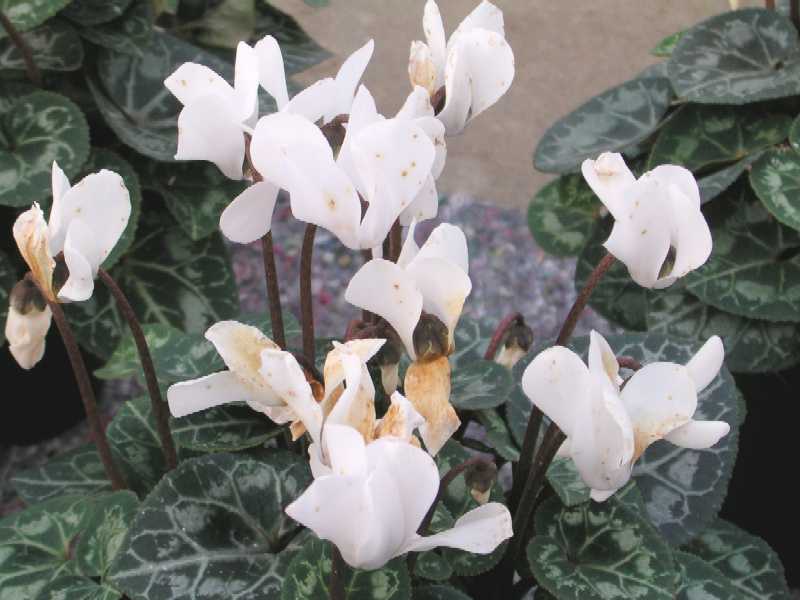
Courtesy and copyright of ADAS Horticulture.
Botrytis infection rotting petiole bases and giving rise to plant collapse
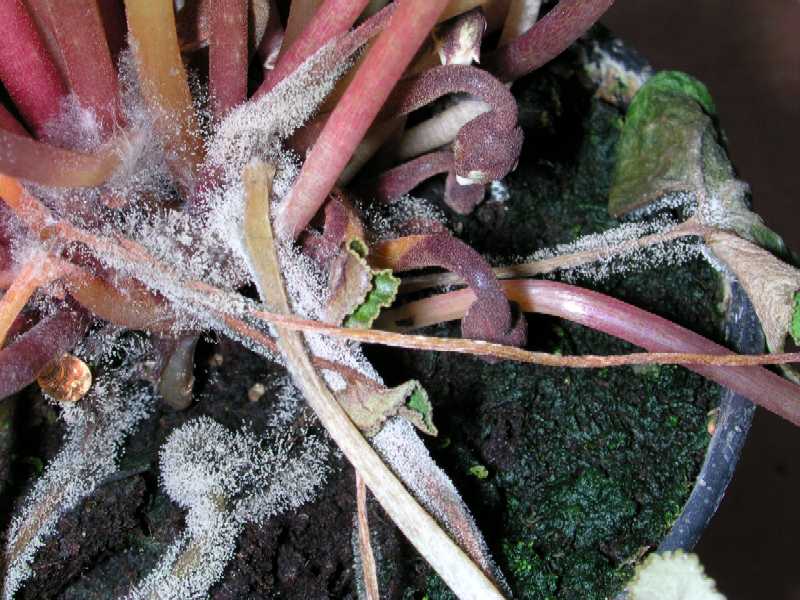
Copyright AHDB.
Powdery mildew
Cyclamen powdery mildew is uncommon. It is characterised by white fungal growth on leaf surfaces, becoming more powdery-like under humid conditions.
Anthracnose
Anthracnose (Colletotrichum species) infections are less common than Botrytis and fusarium wilt but can still have severe consequences.
Initial symptoms develop in new flower buds and leaves at the top of the corm, which turn brownish-black, shrivel and fail to expand. Older leaves may develop blackened edges or show downward curling, while mature flowers collapse as a result of lesions forming on the stalk. Other symptoms include discolouration of the internal tissues of the corm.
Anthracnose is favoured by warm, humid or wet conditions. Under humid conditions, small orange spore masses develop on infected plant parts, with spore spread to new tissue/plants via water splash (and by insects). Infection can also be seed-borne.
Both Colletotrichum acutatum and Colletotrichum gloeosporioides have been identified as causing cyclamen anthracnose in the UK.
Anthracnose caused by Colletotrichum species – note the blackened, shrivelled shoots
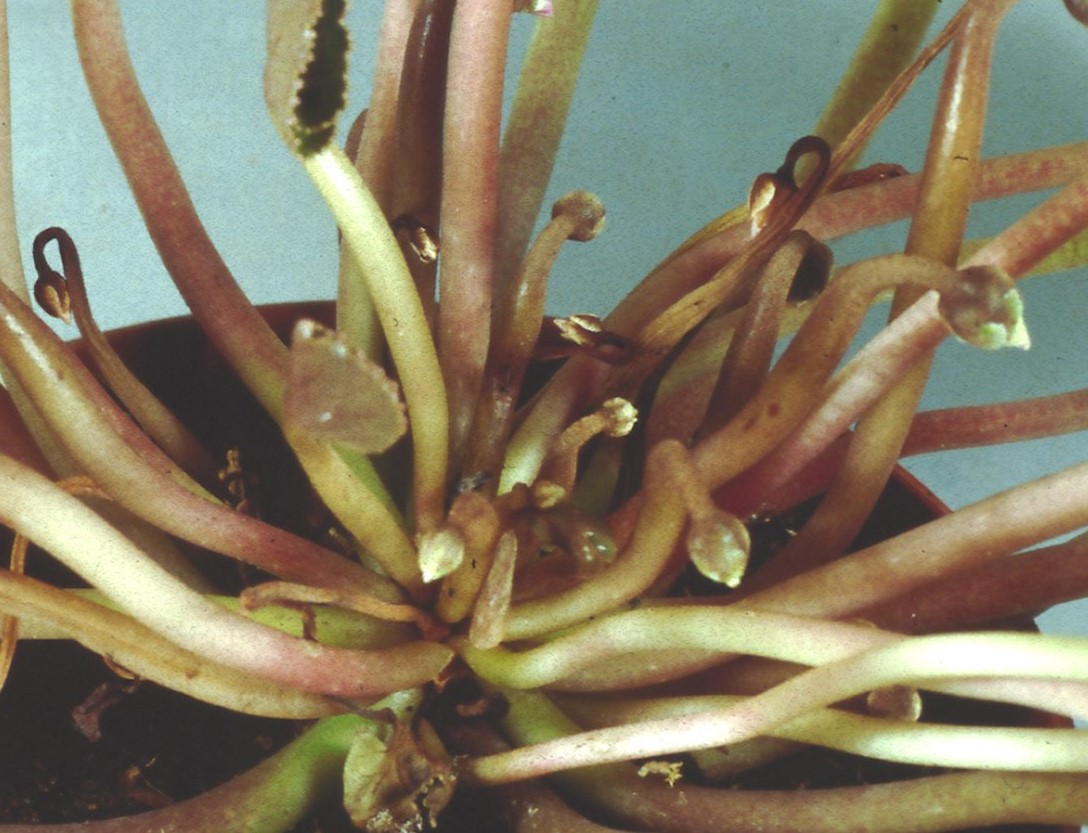
Courtesy and copyright of ADAS Horticulture.
Bacterial soft rot
The pathogen which causes bacterial soft rot in cyclamen is Pectobacterium carotovorum, formerly known as Erwinia carotovora.
The bacterium infects through wounds, including those produced during planting, and if the corm is planted too deep, which allows bacteria to enter into the top of the corm. Other entry sites include growth cracks and damage caused by pests and other diseases.
Infection results in a foul-smelling (cheesy) rot of the corm, with tissue inside becoming soft and slimy, and ultimately death of the plant. Infected foliage wilts suddenly and is easily pulled away, often bringing the top part of the corm with it. The disease progresses rapidly at temperatures above 20°C. Plants affected by fusarium wilt readily succumb to bacterial soft rot.
The infected corm becomes soft and foul smelling

Courtesy and copyright of ADAS Horticulture.
Bacterial soft rot (Pectobacterium carotovorum) results in a sudden plant collapse
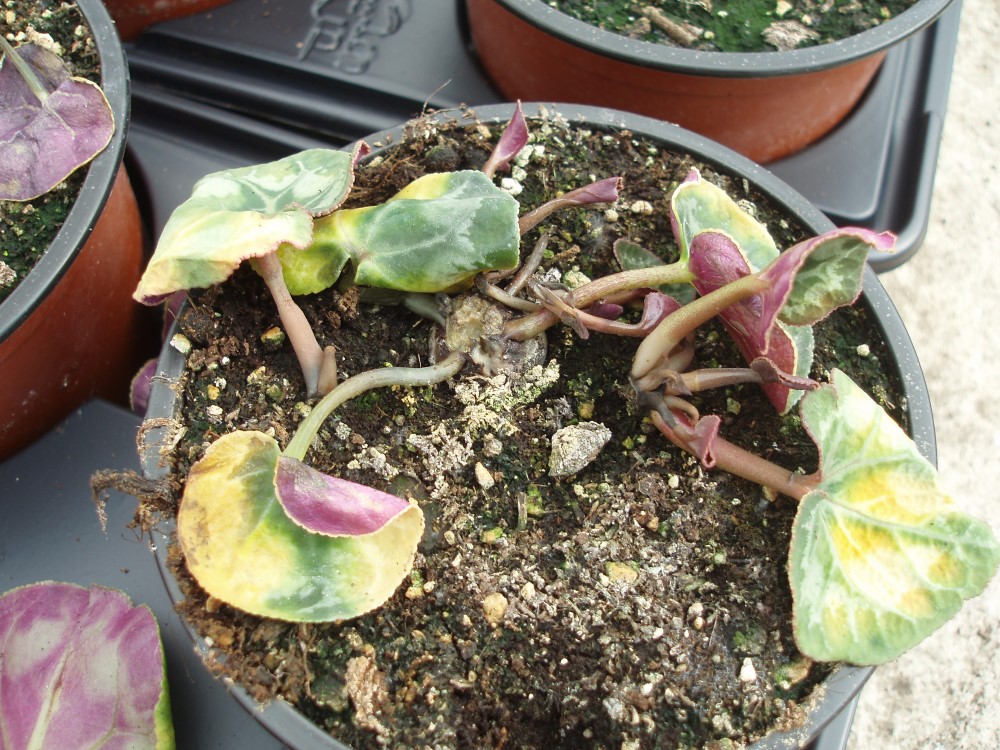
Courtesy and copyright of ADAS Horticulture.
Fusarium wilt
Fusarium wilt (Fusarium oxysporum f. sp. cyclaminis) typically results in 10–30% plant death, but can reach 100% if left unchecked. Symptoms vary by plant variety and flower colour, with some developing symptoms, while others remain asymptomatic. Initial symptoms typically develop close to flowering and include yellowing of older leaves, followed by wilting and plant collapse. This can be confirmed by the presence of reddish brown staining of the vascular strands in the corm following cutting. The roots of infected plants also become brown as the disease progresses. On severely affected plants, white, pink or orange spores of Fusarium may develop on petiole bases.
Fusarium spores are spread by water splash, while longer-lived resting spores contaminate standing areas to infect future crops. The pathogen is active over a wide temperature range but develops rapidly under warm (20–25°C) conditions. It can be transmitted on seed, be introduced as a symptomless infection on young plants and can survive on matting.
Browning of vascular bundles in the corm is characteristic of fusarium wilt. Secondary bacterial soft rot is developing at one edge
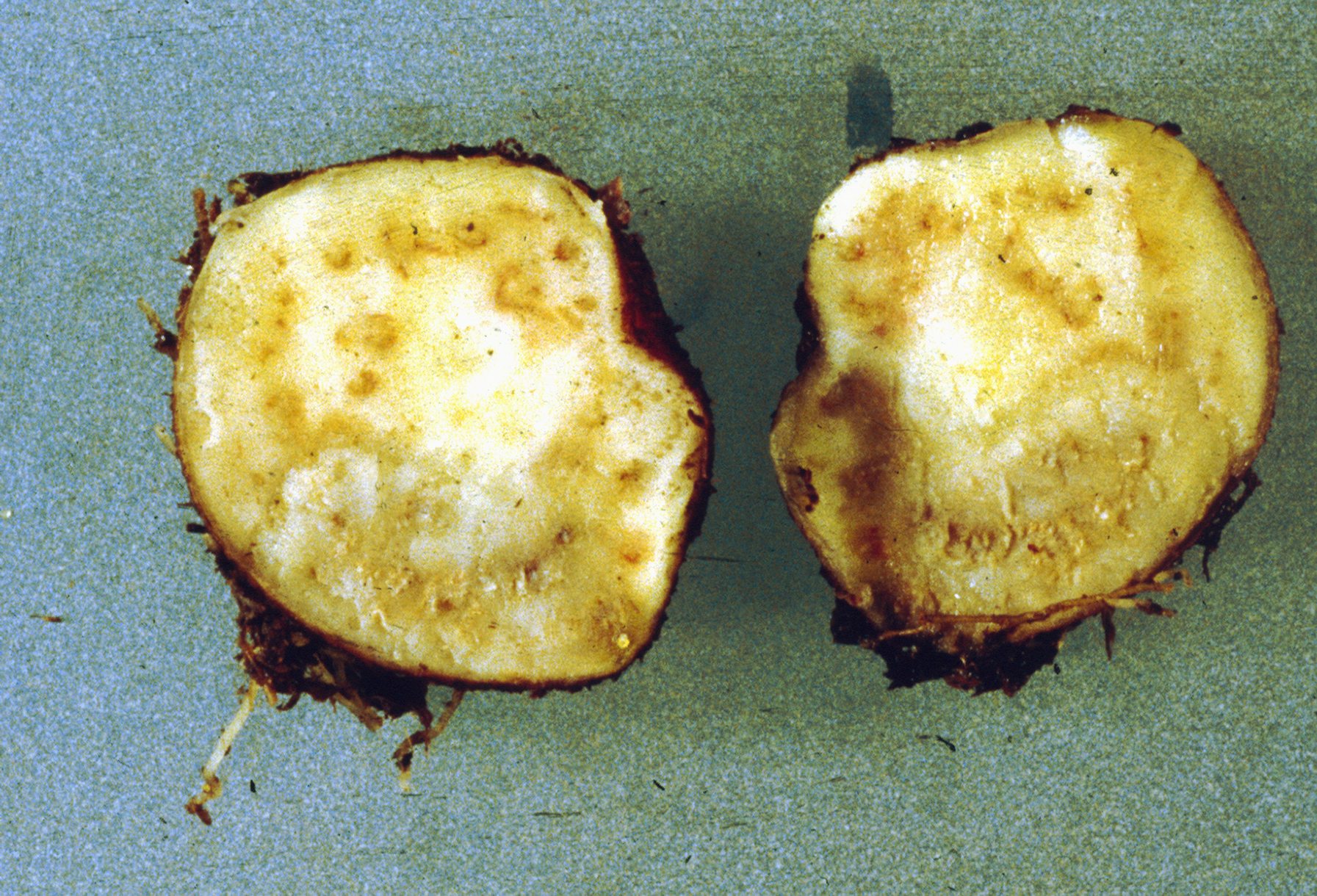
Courtesy and copyright of ADAS Horticulture.
Fusarium wilt often results in bright yellow older leaves, prior to plant collapse
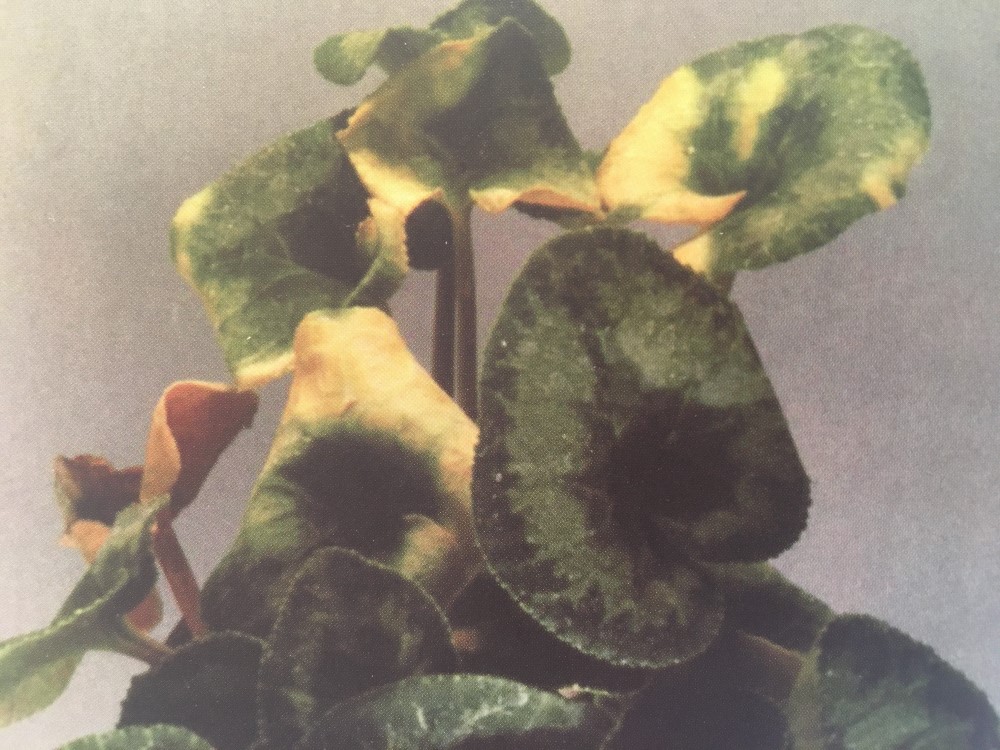
Courtesy and copyright of ADAS Horticulture.
Useful links
Further information on Botrytis control can be found in the following two factsheets:
Authors
Author(s) – Dave Kaye and Erika Wedgwood. ADAS Horticulture.
Original author(s) – Tim O’Neill and John Scrace. ADAS Horticulture.
Webpage content correct as of May 2021.
Topics:
Sectors:
Tags:

